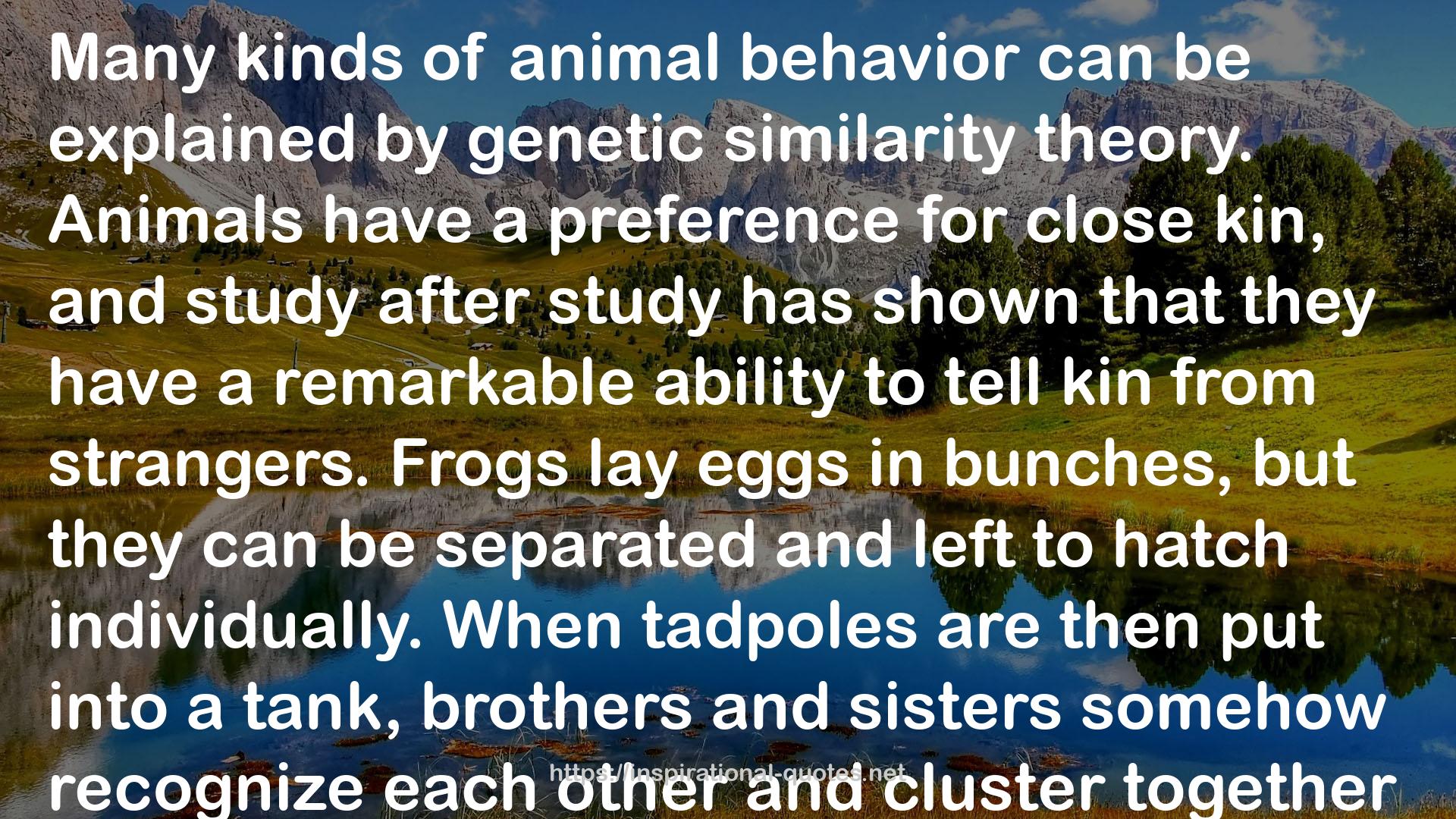" Many kinds of animal behavior can be explained by genetic similarity theory. Animals have a preference for close kin, and study after study has shown that they have a remarkable ability to tell kin from strangers. Frogs lay eggs in bunches, but they can be separated and left to hatch individually. When tadpoles are then put into a tank, brothers and sisters somehow recognize each other and cluster together rather than mix with tadpoles from different mothers.
Female Belding’s ground squirrels may mate with more than one male before they give birth, so a litter can be a mix of full siblings and half siblings. Like tadpoles, they can tell each other apart. Full siblings cooperate more with each other than with half-siblings, fight less, and are less likely to run each other out of the territory when they grow up.
Even bees know who their relatives are. In one experiment, bees were bred for 14 different degrees of relatedness—sisters, cousins, second cousins, etc.—to bees in a particular hive. When the bees were then released near the hive, guard bees had to decide which ones to let in. They distinguished between degrees of kinship with almost perfect accuracy, letting in the closest relatives and chasing away more distant kin. The correlation between relatedness and likelihood of being admitted was a remarkable 0.93.
Ants are famous for cooperation and willingness to sacrifice for the colony. This is due to a quirk in ant reproduction that means worker ants are 70 percent genetically identical to each other. But even among ants, there can be greater or less genetic diversity, and the most closely related groups of ants appear to cooperate best.
Linepithema humile is a tiny ant that originated in Argentina but migrated to the United States. Many ants died during the trip, and the species lost much of its genetic diversity. This made the northern branch of Linepithema humile more cooperative than the one left in Argentina, where different colonies quarrel and compete with each other. This new level of cooperation has helped the invaders link nests into supercolonies and overwhelm local species of ants. American entomologists want to protect American ants by introducing genetic diversity so as to make the newcomers more quarrelsome.
Even plants cooperate with close kin and compete with strangers. Normally, when two plants are put in the same pot, they grow bigger root systems, trying to crowd each other out and get the most nutrients. A wild flower called the Sea Rocket, which grows on beaches, does not do that if the two plants come from the same “mother” plant. They recognize each others’ root secretions and avoid wasteful competition. "
― Jared Taylor
Image for Quotes

